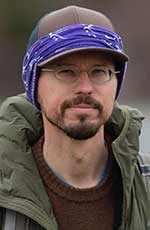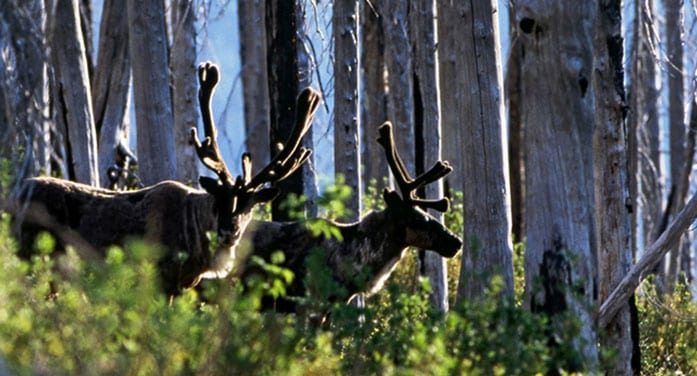Protecting the world’s increasingly fragile environments through land and wildlife management, using the thoughtful approach of Indigenous knowledge, is an idea close to Jared Gonet’s heart.

U o A PhD candidate Jared Gonet
As a citizen of the Taku River Tlingit First Nation, the University of Alberta student in the Faculty of Agricultural, Life & Environmental Sciences is working with his community and with Tr’ondëk Hwëch’in First Nation in Yukon to earn a PhD in conservation biology. He also holds a master’s in wildlife ecology and management.
With a doctoral research focus on finding out how Indigenous and Western knowledge can be equal partners in conservation solutions, Gonet shares his thoughts about why it’s vital to include traditional ways of knowing.
What’s important about bringing Indigenous perspectives to conservation planning?
If you look at reports from the Intergovernmental Panel on Climate Change and the UN environment programme, there’s a climate crisis and a biodiversity crisis that intersect. Western frameworks are failing in conservation; we need to start redefining our relationship with the natural world. Generally, Indigenous perspectives see that we are more related to that natural world and that we have an obligation of deep stewardship to the land. When those values come into play, it can bring different outcomes when thinking about conservation.
How can Indigenous perspectives improve the process?
It’s about having a different set of values in place that bring feeling and caring into the plan. It’s very dry to talk about wildlife or land as resources to be managed or used. From an Indigenous perspective, if I’m creating a conservation plan for caribou, it makes more sense to talk about it as a relationship plan, how you are going to maintain that relationship and your obligation to the animal. That creates a lot more motivation to do what we can to ensure caribou survive.
What excites you about that kind of ground-level approach?
As it creates space at the table for Indigenous people, it can create space for the deep knowledge base within many Indigenous nations, including local knowledge of people who go out on the land and experience it. It also respects reconciliation and resurgence, how Indigenous people have been here in nature since time immemorial, and that we are still here and know how to live with wildlife and the landscape in a healthy way.
How could Indigenous and Western practices work side by side in conservation planning?
Ceremony is one important practice. Indigenous nations have different ceremonies, guided by elders. That creates space for the spirituality they hold for the landscape. Western science contributes to knowing how that landscape is doing – for instance, through population surveys and current technologies like soundscape monitoring.
What do you hope to contribute through your PhD work?
Generally, I’d like my research to find places where Indigenous and Western knowledges can work together as equal partners to create healthy relationships between ourselves and the non-human world. Yet, as an Indigenous person, I need the way we create those relationships to help Indigenous knowledges resurge and continually recreate and revitalize themselves, as they have been harmed, and continue to be, by practices that are purely western or come from a colonial place.
WEBINAR: Emerging technologies that address climate change
Chief Strategy Officer for Emissions Reduction Alberta Mark Summers provides examples of GHG emissions reduction projects underway in Alberta
Without carbon capture, we will not meet our climate goals by Krystle Wittevrongel
Carbon capture prevents the release of CO2 and reduces overall accumulation
To support that process, I’ve been creating questions, methodologies and paths forward with the nations I’m working with, talking with them, and also learning the best thoughts and ideas of Indigenous thinkers in Canada like instructor Leanne Simpson, John Borrows, Shawn Wilson and Max Liboiron, then applying that to my work. And in any work I do, I’ll use my research to continue to try to be that voice that brings Indigenous perspectives and world views.
Gonet’s studies and research are supported by Environment and Climate Change Canada’s South Beringia Priority Place Initiative, Social Sciences and Humanities Research Council, Mitacs, Wildlife Conservation Society Canada, Association of Canadian Universities for Northern Studies and a University of Alberta Presidential Distinction Award.
| By Bev Betkowski
Bev is a reporter with the University of Alberta’s Folio online magazine. The University of Alberta is a Troy Media Editorial Content Provider Partner.
The opinions expressed by our columnists and contributors are theirs alone and do not inherently or expressly reflect the views of our publication.
© Troy Media
Troy Media is an editorial content provider to media outlets and its own hosted community news outlets across Canada.


